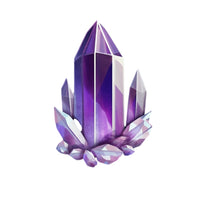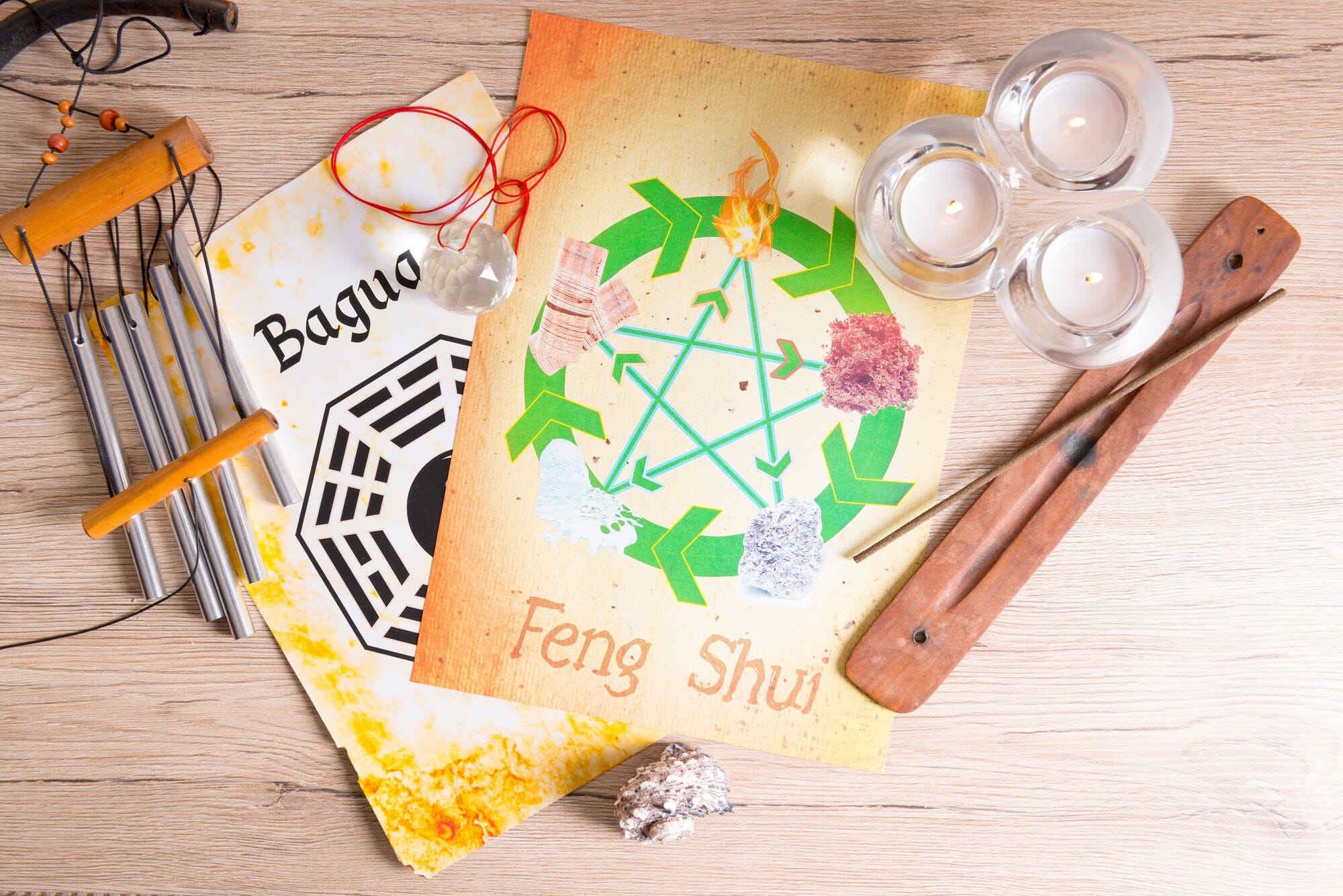Feng shui is an ancient Chinese practice that involves creating harmony and balance in your environment to improve your overall well-being. One important aspect of feng shui is the use of color. But, what is your feng shui color? It depends on your personal birth element. Each person has a specific set of colors that are considered lucky or auspicious for them, known as their feng shui colors. These colors can be used in various ways, such as in the clothing you wear or in the decor of your home, to bring positive energy into your life.
If you're wondering how to improve your luck in a specific direction, feng shui cures can help. One popular feng shui cure for an unlucky direction is to hang a wind chime or place a mirror in that area to deflect negative energy. Another popular feng shui cure is to place specific objects, such as a wealth vase or a set of bamboo plants, to attract wealth and prosperity into your life.
When it comes to attracting wealth and prosperity, feng shui products can be very effective. Some of the best feng shui products for wealth include the wealth ship, the wealth frog, and the money tree. These items are believed to symbolize abundance and are often placed in the wealth or money area of the home.
Another popular feng shui product is the 5 element bracelet. The five elements of feng shui are metal, water, wood, fire, and earth. Each element corresponds to a specific color and is believed to have unique properties and meanings. Wearing a 5 element bracelet can help balance the elements in your life, bringing harmony and balance.
The element of the year 2019, is Earth, this is the perfect time to focus on grounding and stability in your life. There are many ways to incorporate the earth element into your life, such as by decorating with earthy colors, adding a small statue of a mountain, or hanging a painting of a landscape. By doing so, you can tap into the energy of the earth element to bring stability and balance to your life.
When it comes to making your home feel more harmonious, there is no one-size-fits-all solution — but choosing the right Feng Shui color can help. Each color carries a certain energy and meaning, and understanding these meanings can help you create a space that is both inviting and uplifting. Let’s take a look at which colors are best used in which areas of the house.
Feng Shui Basics
Before we delve into the specifics of color, let’s take a step back and get an overview of what Feng Shui is all about. Simply put, it is an ancient Chinese practice that seeks to arrange objects in such a way that they promote balance and harmony between people and their environment. This practice applies to everything from furniture placement to fabric choices; however, when it comes to color choice, it’s important to understand the basic associations between each hue.
Colors of Energy
Red
Red symbolizes passion and excitement, making it an ideal choice for bedrooms or living rooms where you want to create an atmosphere of warmth or romance. It should be used sparingly, however; too much red can lead to feelings of aggression or anger instead.
Blue
Blue has calming properties that make it perfect for bedrooms as well as bathrooms — anywhere you want to create a feeling of serenity. Blue also symbolizes wisdom, so it’s great for use in studies or libraries where you need focus while working on projects.
Green
Green is associated with health, growth, and fertility — so it makes sense that this color would be great for kitchens! The natural shades found in green can also help promote feelings of calmness throughout your home.
Yellow
Yellow has long been associated with happiness and optimism — two qualities that are essential for any home! Whether you choose bright yellow for your dining room or a subtle shade for your entryway, this cheerful hue will bring light and joy into any room.
Orange
Orange is often thought of as a “happy medium” between red (passion) and yellow (happiness). It brings with it the energy needed for creativity but also offers enough grounding so as not to overwhelm the senses. That makes orange ideal for studios or playrooms where kids need inspiration but also structure.
Purple
Last but not least is purple — which symbolizes power and wealth but can easily become overbearing if used too liberally. As such, it should be reserved as an accent color only; try using small accents like pillows or rugs rather than painting entire walls purple!
What is my Feng Shui color?
Your feng shui color depends on your personal birth element which is determined by your birth year. There are five elements in feng shui: Wood, Fire, Earth, Metal and Water. Each element corresponds to a specific set of colors that are considered lucky or auspicious for you.
Wood element: Green, Brown
Fire element: Red, Purple, Pink
Earth element: Light Yellow, Beige, Sand
Metal element: White, Gray, Metallic colors
Water element: Black, Dark Blue
You can find your birth element by looking up the feng shui birth element chart. It's a simple way to find out which colors are best for you, and you can use these colors in your clothing, accessories, or in the decor of your home to bring positive energy into your life.
Feng Shui Living Room
The living room is often considered the heart of the home, and it's important to create a space that is both comfortable and inviting. In feng shui, the living room should be placed in the "social" or "helpful people" area of the home, which is located in the front or middle of the home. The best feng shui living room is one that is well-lit, clutter-free, and decorated in colors that promote harmony and balance. It's also important to have a clear view of the room's entrance and to avoid having the back of the couch facing the front door.
Feng Shui Earth Colors
The earth element is associated with stability and grounding, and the colors that are associated with it are earthy tones such as light yellow, beige, and sand. These colors can be used in the living room, bedroom, or any other room in the house to create a sense of calm and tranquility. Adding natural elements such as wood, stone, and plants can also help to bring the earth element into your home.
Feng Shui Room Colors
The colors you choose for your room can have a big impact on the energy and atmosphere of the space. In feng shui, the best room colors are those that promote balance and harmony. For example, warm colors such as red, orange, and yellow are believed to promote energy and activity, while cool colors such as blue and green are believed to promote relaxation and calm. It's also important to consider the room's intended purpose when choosing colors, for example, cool colors are better for bedrooms, where relaxation is the main goal, while warm colors are better for kitchens, where energy and activity are important.
Feng Shui Lucky Colors
Feng shui lucky colors are determined by your personal birth element. Each element corresponds to a specific set of colors that are considered lucky or auspicious for you. For example, the wood element is associated with the color green, while the fire element is associated with the color red. Wearing or decorating with your lucky colors can help bring positive energy into your life and attract good luck and prosperity.
Southwest
In feng shui, the southwest sector of the home is associated with the element of Earth, and it's considered the area of the home that represents relationships and love. This area of the home is also associated with marriage and partnerships. To enhance the energy in this sector of the home, it's recommended to use the colors of the earth element, such as light yellow, beige, and sand. You can also add natural elements such as wood, stone, and plants to bring in the energy of the earth element. You can also place a pair of objects, such as a pair of vases or a pair of lanterns to symbolize a strong and harmonious relationship.
North West
The northwest sector of the home is associated with the element of Metal, and it's considered the area of the home that represents helpful people, mentors and travel. This area of the home is also associated with career and self-development. To enhance the energy in this sector of the home, it's recommended to use the colors of the metal element, such as white, gray, and metallic colors. You can also add metal elements such as metal statues, metal wind chimes, or metal objects to bring in the energy of the metal element. You can also display symbols of helpful people such as images of mentors, or symbolic objects of travel such as maps, globes, etc.
Feng Shui Bagua Map
The feng shui bagua map is a tool used to map out the different areas of a home or office and identify which areas of your life they correspond to. The bagua map is divided into eight areas, each corresponding to a different aspect of your life, such as wealth, health, and relationships. By understanding the bagua map, you can identify areas of your home or office that may be out of balance and make adjustments to enhance the energy in those areas.
Dark Blue
Dark blue is a color that is associated with the water element in feng shui. It's a color that represents depth, wisdom and calm. It's a great color for bedrooms and bathrooms as it promotes relaxation and tranquility. It's also a great color for offices, as it's believed to enhance concentration and focus. When using dark blue in your home, it's important to use it in moderation as too much can have a depressing effect.
Good Feng Shui
Good feng shui is characterized by a sense of balance and harmony in the environment. A good feng shui home is one that is clutter-free, well-lit, and decorated in colors that promote balance and harmony. The furniture and decor should be placed in a way that encourages the flow of positive energy throughout the space. Good feng shui also includes paying attention to the layout and placement of rooms, such as keeping the kitchen away from the front door, and placing the bed in a position where you can see the door while lying down.
Right Feng Shui Colors
The right feng shui colors for a room depend on the room's intended purpose and the personal birth element of the person living in the room. For example, warm colors such as red, orange, and yellow are believed to promote energy and activity, while cool colors such as blue and green are believed to promote relaxation and calm. The colors that are auspicious and lucky for a person can be determined by looking up the feng shui birth element chart.
Conclusion
Choosing the right Feng Shui colors isn't just about aesthetics — each color carries its own symbolism and energy which can have profound effects on how we feel when we're in our homes. By understanding the meaning behind each hue, we can use them strategically throughout our living spaces to promote feelings of balance, harmony, creativity ... even wealth! With some careful thought about how each color will match up with its surroundings, you'll be able to create a space that truly speaks to who you are—and helps you reach your highest potential at home!



Leave a comment